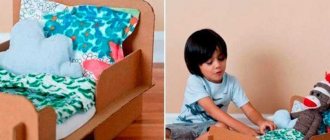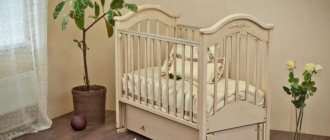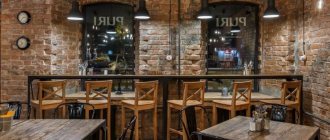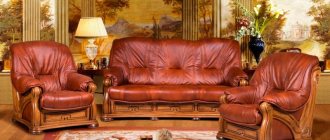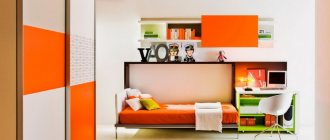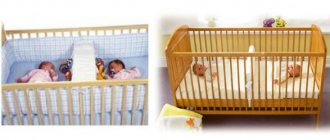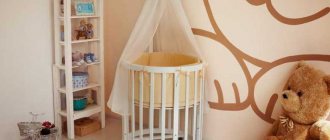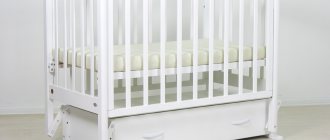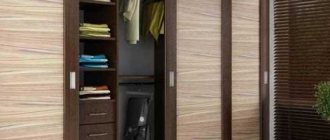Sides are flat soft products that are placed around the perimeter of the crib to protect the baby from impacts. They are also called children's bumpers. This protection is intended for newborns, one-year-olds and children under 3 years of age. The pillow sides can also be used in the future, for example, as toys. Parents have a wide choice of protective barriers for children. There are 3- and 4-sided options, low and high models. If the sides are small, the child will be constantly in sight, which will allow the mother to remain calm about his condition. Tall options are useful for older children, as they are restless and more independent. Those who want to save money or test their sewing skills can make a children's bumper themselves. High quality materials are available for sale. You can also find many interesting implementation options.
Purpose of the sides
Sides are placed on all sides of the bed. Their main task is to promote the safety of the baby and protect his body from diseases. Bumpers protect the child from falling out of the bed, hitting its elements and drafts. If there is no place to place the bed except next to the window, then the sides must be used. Curious children also love to stick their arms and legs between the sticks. This is another reason for using special devices. The additional significance of this protection is to facilitate falling asleep and comfortable sleep, since nothing will distract the baby. The bumpers perform a developmental function. Multi-colored drawings in the form of people, animals and various objects will become a subject of study for the baby. The child will soon begin to recognize these objects and details in the world around him. He will learn to concentrate. It is important that the picture does not irritate him. Removable parts on the protective pads will develop hand motor skills.
Advantages and disadvantages of hand-sewn borders
Self-made bumpers are more versatile. In the case of manual production, you can ideally calculate how much material is needed for a specific bed. Unlike store-bought products, which often have a specific unpleasant odor, homemade barriers are created from the right material. The uniqueness of the bumper as an educational toy also deserves attention. In addition, they are multifunctional. When the baby grows up and “changes” the bed to a larger one, the pillows will decorate the sofa or play area. They can be crafted with this in mind. The side can be made into a full-fledged decorative detail, made in any style you like. It is selected taking into account the gender and age of the child. The disadvantages, as in the case of factory products, are the reduction of space inside the bed and the feeling of being “compressed”. It is worth noting the complexity of the work process and high time costs, which can be avoided by purchasing a ready-made bumper. In addition, it is more difficult to create an interesting design on homemade pillows.
What fabric to sew from?
The quality of soft fencing pads depends on the fabric chosen. Its main characteristics are density and naturalness. It is necessary to choose “breathable” materials. You need to make sure that the fabric is environmentally friendly and hypoallergenic. Natural fibers are better than even the highest quality synthetic fabric, because it is poorly breathable and can cause an allergic reaction. You should choose among canvases made from cotton. Suitable materials are chintz, calico, linen, flannel, flannel. Before cutting the fabric, you will need to wash and iron it. When choosing a material, you should immediately determine whether such a drawing is suitable or not, whether it will be interesting to the child. Density for protection from the cold and strength are important for fabrics, because small children love to touch and explore all the objects around them.
Filler selection
In this case, preference should be given to synthetics. Previously, natural down was considered a good option. Nowadays these are polyester, hollcon, periotek, holofiber, synthetic winterizer and foam rubber. The last two materials are more traditional. All of these options make sewing and washing easier. The best option is synthetic winterizer. In products, it is additionally stitched around the entire perimeter to avoid the appearance of lumps. Such pillows wash well and do not lose their properties afterwards. It tolerates washing and foam rubber well. However, this is not the safest material for children, despite its ability to hold temperature well. Holofiber is also worth noting: with the load inherent to the sides, it will not lose its original shape over many years, in addition, it is hypoallergenic. However, it is a relatively expensive material.
Varieties
Depending on the intended purpose of the side, structures of different heights, configurations, fastening methods and degrees of protection are used. In cribs for babies, it is recommended to use restraints that completely cover the side or long side of the bed. For preschool children, protective systems are installed to protect them from accidentally falling out of bed during night or daytime sleep. They may not be installed along the entire perimeter of the bed, but cover only part of the long side of the mattress.
In order to ensure convenience for the child and parents, the restraints are made removable or with the ability to be lowered down. This will help your baby climb into the crib safely.
Often, a bed restraint is available with a mount that allows you to easily remove the unit from a child's bed and attach it to any other horizontal surface that requires restraint. These bumpers are convenient to use when moving, traveling, and in cases where the child needs to sleep outside of his usual bed. This installation is easy to install and will protect the child even if he sleeps on an adult bed.
All types of bed bumpers to prevent falls are divided into several categories, depending on the material of manufacture:
- Soft;
- Made from mesh-like material;
- Plastic;
- Wooden.
Soft
Soft bed bumpers are made of padding polyester material or foam rubber. A layer of this material is rolled into tubes and fastened together so that the resulting structure is stable and indestructible. By adjusting the number of rollers stacked on top of each other, sides of different heights are made.
In order for such limiters to always look clean and neat, they are covered with covers with a removable snake. The covers are washed in the machine, ironed and put back on foam rollers. This will help to always keep the children's bed clean and the room beautiful.
In order for this design to adhere well to the bed, foam rollers, fastened together, are attached to the mattress. For this, homemade ties, buttons or sew-on zippers are used. Another simple do-it-yourself fastening option is sewing Velcro onto the bed restrainer and onto the mattress. Velcro fastening is one of the most reliable, but at the same time easy to use and operate methods of attaching foam bumpers to a mattress.
Net
A bed limiter made of mesh material is used for cribs if the child is not too small and sleeps separately from his parents. The mesh must be very strong and can support the child if he rests his entire weight on it while sleeping. To securely fasten such protection, you should prepare a frame for the mesh and securely fasten it. The frame is made of wooden slats or metal stops. The restraints themselves are softened by putting fabric covers or foam pillows on them.
This baby bed barrier allows your baby to see what's going on in the room. Thanks to the breathability of the mesh material, fresh air has free access to the baby's bed, which makes his sleep safer, healthier and more sound.
Plastic
Plastic protective barriers for beds come in two types:
- Purchased;
- Made by yourself.
The sides, made of plastic, have fairly high strength, combined with the low weight of the protective installation itself. Commercially available plastic restraints have an original set of necessary fittings for attaching the system to the bed.
When making such a system yourself, you can use available materials, such as plastic pipes for plumbing. They are very easy to fasten together, and thus create a side with vertical slats. The height of the slats is adjusted depending on needs and desires, the width of the holes between the slats - depending on the intended purpose of the side. The plastic bed barrier for children is very light, and there is no need to put soft covers on it. But if such a bed barrier is made of plumbing pipes, for ethical reasons it is covered with a cover or a thin blanket.
Wooden
Wooden restraints are the most popular and are often sold complete with cribs. The main advantage of a wooden stopper is that it is durable, versatile, and also that it fits any interior design. In addition, this installation is easy to wash, remove, and is completely safe for the baby. A wooden bed rail can be made in different designs, have different heights and fastening methods. Wooden barriers are not only used for cribs; they can be used as a removable barrier option for teenage or bunk beds.
Types of sides
There is a wide variety depending on the characteristics. Depending on the type of construction, there are removable and non-removable sides. The first subtype is much more common and is characterized by a greater choice of placement methods. Fixed ones are either solid or with openings. This type of protection will completely protect the child from the possibility of injury. Products can be intended for boys or girls. In the first case, they are made in cool tones or yellow. For girls, any color is suitable, except dark, primarily pink and pastel shades. According to the method of fastening, there are 2 types of protective pads: with ties and with Velcro. In the first version, the fastening elements are located at the edges of the product. In the second case, the clasp is hidden, so the baby will not pay much attention to it. The sides of the crib also differ in height (high, low). There are bombon models with soft squares and a braid, which is easy to make yourself.
Types of bumpers for a crib
Before making a decision about what type of bumpers to sew for a children's bed with your own hands, you need to understand the main indicators for each type of these products and the sewing features.
Sewing bumpers for a newborn's crib is not at all difficult.
- Sides with replaceable covers.
Consist of pillows with covers made of natural fabric. The covers are put on like pillowcases and fastened with zippers. The advantage is that it is possible to sew two sets of outer covers and wash only them. However, this kind of aspect is suspicious, since the baby is capable of contaminating both pillowcases and pillows.
For this reason, the sides will not be able to remain dry and clean for a long time; they will also have to be washed.
For sewing, you will need additional cotton fabric and 4 zippers, no less than 42 cm long, which will lead to additional costs. Replaceable covers are sewn a couple of centimeters larger than the pads so that they can be worn comfortably. The need to use zippers and fasteners is alarming, as they contain small parts that the baby can swallow.
Therefore, it is better to make zippers hidden, invisible to the child.
- Pillow sides.
Convenient in that it is possible to use more filler. In cases with small pillows, 40–50 cm in size, the thickness of the sides can be increased. This way the bed will become the warmest and most comfortable.
The finished pads are simply secured to the rods supported by ties or adhesive tape.
- High sides.
Cover the entire wooden rods around the crib. They protect the baby quite well from drafts and protect against shocks. But the baby is forced to limit himself only to the view of the inside of his bed, which can affect the level of his mental development.
The disadvantage is that they completely block the child's view.
- Low sides that partially cover the bed bars.
In shopping centers you can find many modifications of the sides, which cover the bed by 2/3 or 1/3. Such products have an undoubted advantage - they do not limit the baby’s view and allow him to monitor what is happening around him.
But the safety functions of such products are quite limited.
- Sides with pockets.
If you want to make a bumper with pockets, then an essential condition will be their presence on the outside of the bed. Internal placement will always attract the baby.
He will try to extract and examine the contents.
- Rollers.
They are made and secured in the same way as pads. This option is used much less frequently, since it does not protect the child’s head well from bumps and falls. But under conditions of high temperature in the room where the baby is, this type of sides allows access to fresh cool air.
Therefore, this option is well suited for newborn babies who do not yet know how to move or crawl independently.
Protections made with fastenings in the form of ties, locks, or Velcro can tear when the child tries to rise and pulls the edge.
For this reason, the type with ordinary fasteners is more highly reliable.
The material used to make the bumpers is also very important. Artificial materials can irritate the skin, causing allergic or inflammatory reactions. Therefore, it is better to give preference exclusively to natural fabric.
It will enable the product to withstand washing well and dry quickly without losing its shape.
Step-by-step master class
The main stages of making a side for a crib with your own hands:
- Calculation of the number of products, their sizes.
- Preparation of tools and materials.
- Cut out the fabrics.
- Sewing.
- Decoration.
First you need to decide on the role of the protective partition. Preferred height is key. The same applies to the configuration: solid around the entire perimeter or on 3 sides, so that the child can always be seen from one side (for example, from the side of the bed where the mother sleeps). The number of elements is also important in order to provide all the amenities for the baby. To create the product you will need fabric and filler, as well as all the tools used for sewing. The fabric material is carefully prepared: ironed and, if necessary, washed beforehand. Next, patterns are made. They are then transferred to the material. But if you have enough experience, the required dimensions are immediately applied to the fabric. After this, the sides, ties and decorative elements are sewn. The process will be much like making pillows. At the end everything comes together - the product is ready.
How to calculate the number of products and their sizes
It is necessary to determine the optimal height of the side. For babies under 4 months they are made low. This is to ensure that parents have enough visibility. For children struggling to stand up, more secure tall options are needed. With a bed length of 120 cm and a width of 60, the total length will be 360 cm. The length of the protection is also calculated depending on the location. This figure for U-shaped sides is usually 190 cm. The height of the bumper is a matter of priorities. It is recommended to choose a lower side so that the baby is visible and can grab the bars when he gets up. A height of 30 cm can be considered optimal. The side is made so that the baby cannot stand on it. As for the number of products, the classic protection consists of 4 parts: 2 with a height of 30-55 cm and a length (width) of 60 cm, 2 of the same height and a length (width) of 120 cm. Thus, a barrier of individual pillows around the entire perimeter is high 30 cm includes 12 elements.
The whole thing will take up to 3.6 m of fabric, but it’s better to take more for decoration and the ability to correct mistakes!
Required materials and tools
First of all, you will need fabric and filler. It is preferable to choose natural canvas. Among the fillings, it is better to choose synthetic roll filling. It is hypoallergenic and washable without loss of properties. You will need a sewing machine. However, if you have the skills and patience, you can sew the borders by hand. You will also need such devices and tools as tailor's pins, a long ruler or “centimeter”, a needle, and scissors. For cutting, you should get a marker or pencil, as well as soap or chalk - one of your choice. You need paper to create patterns, but with enough experience you can do this directly on the fabric. You also need threads in the same color as the main fabric. Other necessary accessories: zippers or buttons, ribbons, braid, decorative elements (felt appliqués, lace, etc.).
Preparing and cutting fabric
You need a clean, ironed cloth. Patterns are made in advance, and then they are carefully transferred to the fabric. Leave 1-1.5 cm for the seams. For bumpers with covers, you will need to cut two sets of fabric - a lining and one for the covers. If rolled padding polyester is chosen as the filler, then cutting is carried out in the same way. The dimensions of the samples, however, are reduced by 1.5-2 cm (depending on the thickness of the material) so that the filler fits into the case. If the sides are made in the form of pillows, cutting will not be necessary. You just need to cut out squares of a certain size. For an ordinary rectangular crib you need twelve pillows measuring 30x30 cm. Pillows in the form of houses can be made according to the same pattern. The size is selected depending on the various parameters of the crib. The dimensions of the stock are carefully measured so that necessary adjustments can be made if anything happens.
Sewing process
These works include 3 processes:
- Sewing the sides themselves.
- Creating ties.
- Sewing decorative covers.
The work begins by folding the lining fabric from the outside inward and sewing the cover together. A hole is left for the filler. The cover is then turned inside out and the required material is inserted into it. The hole is carefully sewn up, ideally this is done by hand and with a hidden seam. This procedure is carried out for each security element. The ties are sewn using 2 methods - regular or with Velcro. Ribbons and braid can serve as simple ties. Basic material will also work. The number of ties and their sizes is an individual matter. As a rule, two dozen fasteners are required: 4 for the headboard and footboard, 6 for both sides. It is recommended to sew more fasteners for a more secure fit. If you are creating pillow sides, then at least 2 ties are needed for each. In the case of decorative covers, you need to mark in advance the location of the fasteners and baste them.
How to sew a frill into a border
To do this you will need to know some nuances. Firstly, for the frill you will need a strip of material with a width of 7 to 15 cm. The length can be changed if necessary. It should be at least one and a half times larger than the part. In this case, the folds will not be very voluminous. If the length of the frill exceeds that of the part by more than 2 times, the pleats will be fluffy. Using a sewing machine, the frill can be easily assembled. The ruffle will need to be assembled by hand. For this, a regular needle is used. First, a needle and thread of the required length are taken, then the material is laid out like an accordion and pierced. After this, all that remains is to distribute the pleating along the entire length of the thread. For instant basting, you will need to place the frill between two layers of material. When making the sides, it is better to make a frill for all sides of the crib and connect them at the corners.
How to sew bumpers for a newborn's crib with your own hands, step-by-step instructions
In order to make the bumpers for a newborn crib with your own hands, patterns are not at all necessary. You can mark directly on the fabric. To correctly measure for sewing a side, you simply need to measure the perimeter of the crib and divide it by the number of pillows. But since cribs mostly have standard parameters, you can use the following sizes.
- Make 4 parts – 43 by 63 cm.
- Make 4 parts - 43 by 123 cm
- For the frills you will need pieces of fabric 7 cm wide and 180 cm long.
Pattern of sides for the crib with dimensions. - Cut the filler according to these parts scales.
- The frill strips must first be prepared by smoothing them with an iron.
- Use your fingers to create curves in the parts and, inserting a frill, sew each pair of parts on 3 sides.
- After inserting the filling, sew up the remaining side.
- Sew ties or Velcro to all parts of the sides.
Ready-made bumpers for a newborn's crib.
Methods for decorating the finished product
For this purpose, frills, appliqués, large buttons, bows, ribbons, etc. are intended. If the pillows are decorated along the entire length with lace or frills, then they need to be basted or sewn into the main seams. The decor can also be located on the front side of the case. The bumper and the frame next to it are also decorated with applications, patterns and designs. For safety reasons, the sides are made very soft and decorated with fabrics of similar softness (for example, felt). Such products are also called shockproof boards. Stickers with designs, including furniture stickers, are also used to decorate sides and rods. They should be placed on the outside of the pillows and the inside of the bars of the crib to prevent the child from unhooking the parts and being in danger because of this. Small objects like pebbles and rhinestones are not suitable for decorating borders.
Types of limiters
Based on the fact that a bed rail can be used in a variety of cases, for different categories of users, and can also be installed on different types of beds, there are a huge number of product varieties. To correctly choose a functional and reliable protective board, you should understand the features of each type.
Bed guards against falls can be classified according to several characteristics: products differ from each other in the type of material, method of fastening and design.
By material type
Bed restraints are made from a variety of materials. He can be:
- soft;
- mesh;
- plastic;
- wooden.
Which car bed to choose for boys and girls, tips
For the youngest children sleeping in a separate place, soft sides are ideal. Such restraints for a child's bed are made of foam rubber, thick enough so that the baby does not hit the hard bars of the partitions while sleeping. As a rule, such products are equipped with one or more fabric capes. The removable cover can be changed and washed when dirty.
The mesh side is suitable for older children or those babies who sleep with their parents. Protective barriers for children's beds made of mesh are a plastic or metal frame with fastenings, on which an elastic fabric or plastic mesh is stretched. The undoubted advantage of such a board is its breathability. In addition, such a barrier for the bed does not prevent the child from seeing everything that is happening around him in the room. The mounting method on such devices is, as a rule, universal and allows you to hang the fence on any type of furniture.
When constructing a mesh protective barrier for a bed, special attention should be paid to the strength of the material and the reliability of fastening the device to the frame so that the child cannot push through the barrier with the weight of his body.
A plastic side often comes with a bed. This is a ready-made design with a removable or non-removable fastening. The advantage of the product is reliability and high protective properties. The thickness of the plastic used to make the barriers will not allow even an older child to break through it in his sleep and fall to the floor. In addition, this is a fairly soft material, so additional covering of the structure with fabric and a softening layer is not required.
A factory-assembled functional children's bed is most often equipped with wooden sides. The second tier is subject to increased safety requirements, so even if a teenager sleeps there, the furniture is still equipped with protective guards, because a fall from a height higher than a child’s height carries the risk of serious injury.
Soft
Reticulate
Plastic
Wood
By mounting method
Protective restraints for beds may also differ in the type of fastening. The designs are:
- with mechanical fastening;
- with fastening under the mattress;
- removable;
- folding;
- stationary;
- with fabric fastening.
Ready-made plastic or mesh barriers are equipped with a thoughtful and reliable fastening system. Most often, devices are mechanically attached to the frame or bottom of the bed using the bolts included in the kit. They may have a folding design, which in the future will allow an older child to climb into bed independently. This functional bed barrier is a reliable choice for safety.
Sometimes the fasteners are screwed only to the side itself, and the other side is simply placed under the mattress and held on by its mass and the weight of the child lying on it. This barrier is easy to install and can be easily removed, but keep in mind that it is not suitable for a baby under 1 year old, since its weight is still too small to hold the side in place.
Stationary fastenings are most often sold complete with furniture; they can especially often be found as part of bunk beds and couches for teenagers. They are securely connected to the berth and are part of its design. Typically, such sides are made of wood or chipboard.
Design options for a pull-out bed for two children, assembly order
The soft barrier has one of the varieties of fabric fastenings. These can be ribbons, ties, Velcro or zippers. Despite the apparent weakness, this fixation is quite reliable. It is only important to pay attention to the quality of the seams and threads.
With mechanical sealing
With fastening under the mattress
Removable
Folding
Stationary
With fabric fastening
Master class on sewing pillows in the shape of animals for sides
There are many interesting options for making bumpers in the shape of animals. These can be exotic African animals or animals living in temperate climates. Popular varieties of bumpers are “cat”, “elk” and “owl”. To make such a beautiful bumper, the first thing you need to do is prepare tools and materials. This is a standard set of pencil or chalk, scissors, pins and thread. Fabrics are bought with interesting patterns, in several different versions. Patterns of parts of the face are also created for transfer to fabric. They are made large and expressive. The animal's body is made of one or more parts. It is recommended to combine monotonous and variegated fabrics. When the elements are sewn to the front part of the product, the connection of all the fabrics and the filling of the cushion-side begin. At the very end, ribbons are attached to the bumper. When the baby grows up, they can be removed to use the pillow as a toy.
Cat shaped pillow
First we make a pattern and transfer it to the fabric. The samples should show the dimensions of the cat itself, its ears, nose and cheeks. On the fabric, to the pattern of the upper body, you need to add 1 cm around the entire perimeter for allowances. The lower part is made measuring 34x17 cm, taking into account allowances. Using chalk or a disappearing marker, draw a mouth, nose, mustache, and eyes. Symmetry must be maintained. Next, we sew the bottom strip to the upper part of the body and iron the seams in one direction. Then the nose, cheeks and ears are cut out of felt. The details are sewn on with a small zigzag. We embroider the mustache, mouth and eyes with thread using a straight fine line two or three times. We fold two 50-centimeter ribbons in half and attach them to the product with pins. The back part of the product is cut out in the same size as the front. Then they are connected, the pillow is turned out and stuffed. The hole is sutured in a hidden way. The cat should be decorated with bows.
Elk pillow
You will need to make patterns for:
- spout;
- ears;
- horn;
- heads;
- lower body (less than the head).
You will also need cotton material in 2 colors, white fabric, satin ribbons 60x2.5 cm, filler, floss threads for the mouth and eye, pencil or tailor's chalk, scissors and pins. First of all, the body-shaped patterns are attached to white fabric and the necessary element is cut out with scissors, taking into account allowances. You need two of these parts. Horns, ears and nose are cut from various fabrics (felt, etc.). There is no need to make allowances for the nose. Then a white material is taken in the form of a head and eyes and a mouth are made on it using floss threads, and the cut out nose is also attached and stitched. The lower part of the body (made of colored material) is carefully sewn to the head. Then the horns are attached to it and its upper part is stitched, including the length of the edges of the horns. The next thing to do is pin on the ears. After this, the tapes are attached. The halves of the product are sewn and filled.
Owl pillow
To sew an owl border, you will need a beautiful colored fabric (you can take green), preferably with a repeating pattern. For one element, we take a canvas measuring 50x75 cm. It is cut into two parts of 50x37.5 cm. Squares of 36x36 cm are drawn on them, which will “go” onto the owl’s head. The remaining areas are needed to create the ears; they will also need to be drawn on the fabric. Next, you will need a piece of white fabric 27x20 cm to create the eyes. They are made with one figure, with a transition. The wings are cut from a material of a different color. Gray goes well with green. You can take calico, gray with white polka dots. A rectangle 14 cm wide and 16-17 cm long is marked on it. An arc is drawn on this fragment. The beak can be cut from the same material. It is placed under the eyes. All parts of the front side of the pillow are attached and stitched using a sewing machine using a zigzag seam. Then the eyes are drawn with a pencil in the form of corners lowered down. Then they are decorated with gray threads. At the end, the front side and the base are connected and filled with padding material.
Soft removable bumpers for beds 90-120 cm (on 1 side)
The soft border-limiter is a base along the width of the bed, which is attached to the mattress or bed base using three long slings. The slings are pulled under the mattress or under the bed and fastened with fastex from the front side for the convenience of the caregiver. The length of the slings allows the device to be used on mattresses up to 25 cm high and 90-120 cm wide.
The base is made of 100% cotton fabric with soft filling inside for added comfort. On both sides of the base there are loops made of slings into which the limiter roller is inserted. Can be used with one or two rollers as required. When using a base with one bolster, the loose loops on the other side are simply tucked behind the mattress, leaving more space for the patient. Also, when moving the bed to an open space, there is no need to buy another safety device; it is enough to purchase a second bolster and insert it into the free loops on the other side of the bed. This is also convenient if limiters are needed in different rooms with different bed locations, for example, in an apartment and in a country house.
In this version, the base is equipped with one roller with a diameter of 18 cm and a length of 55 cm. The roller is made of foam rubber and equipped with a removable waterproof pillowcase made of membrane fabric.
It is optimal to use a safety device by placing the base on the mattress under a waterproof sheet. This way it will remain clean for a long time, and if the roller gets dirty, just take it out of the loops, remove the pillowcase and wash it. The fabric is breathable, waterproof, does not allow dust and microorganisms to pass through (the foam underneath will always remain clean), wear-resistant, machine washable and dries quickly. If necessary, for example, in case of frequent contamination when feeding or toileting the patient, you can purchase a replacement pillowcase for the roller.
The roller is made of completely breathable (air-permeable) materials, due to this, when the roller comes into contact with the patient’s skin, for example, if he leans or reclines on it, the skin in the places of contact with the roller breathes and there is no fear of redness, weeping areas and other problems.
Peculiarities:
- Removable edge-limiter - easy to clean when dirty;
- The foam base of the side ensures maximum safety; the patient will not hit himself, even when sharply tilted onto the side;
- Possibility to use a base with one or two bolsters depending on the location of the bed;
- Thanks to the soft layer, the base is not felt and causes discomfort;
- The roller cover is removable, with a zipper, and can be easily washed;
- The waterproof pillowcase reliably protects the roller from contamination. The pillowcase fits over the cushion like a sock, ensuring a snug fit without creasing. The surface of the pillowcase is soft, terry, hypoallergenic;
- Suitable for mattresses up to 25 cm high, 90-120 cm wide;
- The slings are fastened not under the mattress, but on the front side of the bed.
Product care (pillowcase):
- Hand or machine wash at a temperature not exceeding 40°C (the fabric manufacturer allows washing at 60°C, however, to preserve properties for several years, we recommend washing at lower temperatures);
- Dry flat (machine drying is prohibited);
- Ironing is prohibited;
- Bleaching is prohibited.
Product care (basis):
- Hand or machine wash at a temperature not exceeding 40°C (washing at 60°C is allowed, but cotton shrinks at high temperatures);
- Dry flat (machine drying is prohibited);
- Ironing in the “Cotton” mode (up to 150°C);
- Bleaching is prohibited.
The foam base of the roller can also be washed periodically, but thorough rinsing is recommended, since foam rubber absorbs detergents well (like a regular sponge).
Sides - bombons
The product will consist of pillows 60x30 cm with small squares measuring approximately 10x10 cm. If you plan to protect the crib on 3 sides, you will need 4 pillows, and if on 4, then 6. The bombon side squares are made from pieces of 17x17 and 10x10 cm. In the first case it is a colored fabric with a pattern, in the second it is white (you can take calico). Cuts of about 5 cm are made on small square fragments. The edges of large colored pieces are attached with pins to small ones, in places where the corners of both fabrics meet. Next, folds are formed, which are also secured with pins. Each side is stitched at a distance of 0.5 cm from the edge. This is how 18 parts are made for one 60x30 cm pillow. The squares are sewn together and stuffed with filler on the back side. It is necessary to alternate elements of different colors (ideally, at least 5 color options are used). The rest of the pillows are made in the same way.
It is better to use ribbons as fastening elements; they should be placed at a distance of 30 cm from each other.
Colors and decor
Among the variety of decorative options for bed restraints for children, everyone can easily find the perfect one for themselves. There are several nuances that will help make the choice easier. Modern psychologists unanimously claim that the younger the child, the more important it is for him to have different colors, patterns and details in his sleeping area. Looking at them every day, the baby develops vision, perception of color, size and perspective. Therefore, it would be a mistake to purchase monochromatic designs - it would be better if they had a small print of delicate pastel colors.
Traditionally, pink interior items are chosen for girls and blue for boys. This is an optional rule. Combinations of simple colors in soft shades look good - blue and yellow, green and pink.
An older child’s room or corner can be decorated in simpler shades, repeating the color scheme of the nursery’s interior. It’s good if it reflects the baby’s character or his hobbies. For a comic book lover, you can choose models with superheroes depicted on them, and for a young car collector, you can choose a racing track.
Models and designs of children's beds with soft backs, popular brands
When choosing a design option, it is important to pay attention to the properties of colors. So, yellow lifts the mood, green calms, and orange excites the psyche. In any case, it is recommended to refrain from an abundance of such active colors as black or red, or introduce them very carefully, with small color accents.
Braided side braids
It is better to choose something dense as a fabric, for example, cotton velor. Holofiber will perfectly cope with the role of filler. 1 braid 120 cm long will take approximately 1 kg of this material. First, the complexity of the product is determined: the side braid can be made not only in 3, but also in 4 strands. It's worth trying a more complex option. The length of the strands is calculated based on their number. Since the side of the crib is usually 120 cm long, a strand of braid of four elements will need 147 cm (120 cm multiplied by a factor of 1.22). The required width is 19 cm. All 4 pieces of different colors are connected and then folded in half. These actions are performed using a machine. Next, the resulting sleeve is tightly placed on a 1.5-meter pipe and holofiber is stuffed into the far end of the material with another, thinner pipe.
Further actions:
- The free end of the fabric is sewn up with thread around the circumference. The closed one is steamed and stitched in the same way.
- Creating a braid begins by forming a center from the 1st and 3rd joints.
- The two remaining free ends are connected with a thread.
The length of the braid can be adjusted by increasing or decreasing the tension.
Features of sewing side bolsters
Fabric for rollers is taken in 2, 3 or 4 different colors, including 1-2 canvases with patterns. It is better to choose holofiber as a filler, since the shape of the sides implies a strong impact on the product. If the crib has the usual dimensions (120x60 cm), then the shorter ones are made 60 cm long, and the longer ones - 100 cm. The optimal width of the bolsters is 12 cm. For 60-centimeter products, a rectangle of 60x40 cm and a circle with a diameter of 13 cm are required. Accordingly, for 100-centimeter rollers you need a 100x40 cm rectangle and the same circle (13 centimeters). From the wrong side we sew the rectangle into a ring with the large sides. Next, a circle is sewn to one of the holes of the roller. Another circle is attached to the other edge, leaving 5-7 cm open. Then the product is turned inside out and filled with stuffing. The hole is sewn up by hand.
How to sew pockets for a crib
You will need the following materials:
- 2 pieces of tape 1 meter long;
- padding polyester, 60×50 cm;
- striped fabric, 60×60 cm;
- 2 pieces of white fabric, 100x60 cm each.
The width of the pocket is consistent with the characteristics of the bed. Usually it is 60 cm. The depth can be made a little smaller, about 50 cm. We fold the striped fabric in half and iron it. We do the same with the white material. Then we put striped fabric on the folded white fabric. We place both with the free edges down. Then we sew the product along the borders of the striped fabric, but leave the line in the middle free, only dividing it into two halves. Next, the back element of the pocket is sewn. It is reinforced with padding polyester. We fold the fabric over this filler and pin it. We sew the top and sides. Then we fold both main parts right sides inward and stitch the bottom and sides. After this, we turn the product inside out and straighten it. At the top along the edges we attach 2 ribbons. Now you can put toys and other items into the product.

